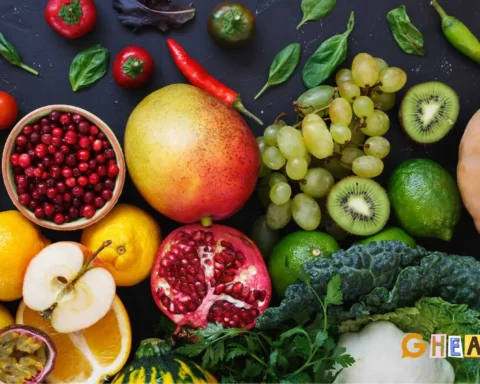Ever wondered if sugar has more aliases than a secret agent? Brace yourself for a sweet revelation as we delve into the covert world of hidden names for sugar. From sucrose to mysterious monikers, this journey will uncover the disguises that sugar wears to sneak into our daily lives.
Get ready to decode the sweetness that's been hiding in plain sight – this is your guide to the intriguing universe of Hidden Names for Sugar!
Table of Contents
Hidden Names for Sugar: Decoding Sugar's Disguises
Sugar often wears various masks, concealing its presence behind a multitude of names. Join us as we peel back the layers to unravel the mystery of sugar's disguises—exploring terms from fruit juice to golden syrup.
Understanding these aliases empowers us to make informed choices about sugar intake, shedding light on the sweet secrets hidden in everyday foods.
Sucrose: The Sweetheart Alias
In the world of sweet aliases, sucrose takes on the endearing guise of the "Sweetheart Alias." Let's delve into this sugary affair and explore the nuances.
The journey begins with raw sugar, the unrefined counterpart to its more processed sibling. Unlike its refined counterpart, raw sugar retains a touch of molasses, giving it a slightly richer flavour profile.
On the stage of nutrition labels, "grams of sugar" takes center stage. It's the metric that unveils the quantity of sweetness hidden within each serving, urging us to be mindful of our intake.
A classic companion, brown sugar joins sucrose on this sweet journey. Created by combining molasses with refined white sugar, it adds a distinctive taste to various culinary creations.
As sucrose ventures further, it encounters beet sugar—a sweetener extracted from sugar beets. This alternative to cane sugar is a versatile player in the world of sweetening.
Adding a touch of glamour, "golden sugar" makes an appearance. Despite its alluring name, it remains essentially refined white sugar, often with an added marketing appeal.
Nature's contribution to the sweet symphony, grape sugar, is found naturally in grapes. It subtly enhances flavours in processed foods without explicitly labelling the addition of "added sugar."
The detective in our story, the food label, serves as our guide, revealing the intricate details of sucrose's presence. Understanding how to interpret this label empowers us to make conscious choices.
Amidst the complexity of sweet terminology, "simple sugar" emerges. It encapsulates the basic, easily digestible form of sugar—like sucrose—highlighting the fundamental nature of this sweet substance.
From cane sugar to the various forms of sweeteners, our exploration reveals the diverse cast of characters within the sugar family. Each type contributes its unique nuances to the overall sweetness narrative.
As we unravel the layers of sucrose's Sweetheart Alias, we discover that behind the sweetness lies a world rich in diversity. Navigating through raw, brown, and golden variations, sucrose remains captivating, leaving its imprint on the symphony of flavours in our daily lives.
High-Fructose Corn Syrup: The Sneaky Operative
In sugar's many disguises, high-fructose corn syrup emerges as the Sneaky Operative. This commonly used sweetener, derived from corn, has found its way into many processed foods, often slipping past our attention daily.
A higher fructose content than regular corn syrup adds potent sweetness to beverages, baked goods, and even savoury items. The sneaky part lies in its prevalence – it's often present in products where we least expect it.
High-fructose corn syrup operates in the shadows, camouflaging its sweetness behind different names on ingredient lists. It might go by the alias of "corn syrup solids" or be part of a blend with other sweeteners, making it challenging to identify its presence.
This operative has been implicated in health concerns, with some studies linking excessive consumption to issues such as obesity and insulin resistance. Despite this, its stealthy infiltration into our diets continues.
Spotting high-fructose corn syrup or corn sweeteners that lead to excessive sugar content requires a keen eye on food labels. It's not just in sugary snacks but can also lurk in seemingly healthier options. Its covert nature demands a conscious effort to decode ingredient lists and make informed choices about our sugar intake.
As we navigate the landscape of sweeteners, high-fructose corn syrup stands out as a Sneaky Operative, a reminder to stay vigilant in our quest for healthier eating habits.
Agave Nectar, Honey, and Other Sweet Aliases
Agave syrup, Honey, and other sugary counterparts take center stage in the expansive realm of sweet aliases. These alternatives to conventional table sugar add a touch of diversity to the world of sweetness.
"Grams of sugar" become a vital metric as we explore these sweeteners, offering a quantitative glimpse into the sweetness concealed within each serving. Agave nectar, often perceived as a healthier option, boasts a sweeter taste than table sugar, encouraging a shift in the sweetness paradigm.
Honey, a timeless favourite, is not just a natural sweetener but also carries a distinct flavour profile influenced by the nectar of flowers. It is a testament to the varied tastes that different types of sugar can bring to our palate.
Venturing further, we encounter coconut sugar derived from the sap of coconut trees. With a lower glycemic index than regular sugar, it is a potential alternative for those seeking a milder impact on blood sugar levels.
Castor sugar, finer in texture than granulated sugar, finds its place in delicate desserts. In contrast, yellow sugar, tinted by molasses, adds a subtle richness to various culinary creations.
The spectrum extends to natural sugars, encompassing the wholesome sweetness of fruits and other natural sources. Glucose solids, derived from starch, serve as a versatile sweetening agent, often used to produce food products like ice cream.
Speaking of ice cream, the sweet journey wouldn't be complete without acknowledging its sugary influence. The types of sugar incorporated into ice cream formulations can vary, contributing to this beloved frozen treat's overall taste and texture.
As we navigate this sweet symphony, the varieties of sugar, from agave nectar to coconut sugar, remind us of the nuanced flavours hidden within the world of sweetness. It's a journey beyond the simple measure of grams of sugar, exploring the diverse tastes that different sweet aliases bring to our tables and taste buds.
Exploring the Covert World
As we delve into this covert world, we unravel the mysteries behind the sweetness that permeates our daily diets. Join us in uncovering the secrets that lie beneath the surface as we navigate through the subtle nuances of the sweet symphony that defines our culinary experiences.
From Cane Juice to Corn Syrup: Unmasking Sugary Intruders
In the relentless quest to unmask sugary intruders, our journey takes us from cane juice's purity to corn syrup's ubiquity. Amid the backdrop of natural sugars, we confront the stealthy adversaries that often lurk within our daily diets.
Sugar consumption, a phrase echoed twice in our narrative, is critical to this exploration. With the average person consuming more sugar daily than recommended, the impact on health is a growing concern. Unveiling these hidden sugars demands a closer look at the ingredients list, where crystalline fructose and other aliases often disguise themselves.
A rule of thumb emerges: scrutinize salad dressings. These seemingly innocuous additions to our meals can harbour hidden sugars, contributing to our daily intake without realizing it. The phrase "hidden sugar" rings thrice in our endeavour, emphasizing the need for vigilance in our food choices.
Blood sugar, influenced by these covert sweeteners, becomes a focal point of consideration. Understanding the sources of sugar, reiterated twice, is pivotal in managing our overall health. As we navigate this landscape, sugar alcohols may emerge as alternatives, yet their impact on blood sugar requires careful consideration.
In our pursuit to unmask sugary intruders, we confront the visible culprits and those cleverly concealed within our everyday meals. The journey from cane juice to corn syrup unfolds as a revelation, urging us to be mindful of the hidden sugars that can subtly infiltrate our diets.
Brown Rice Syrup, Malt Syrup, and Beyond: Sugar's Secret Identities
Embarking on a journey into the clandestine world of sweeteners, we unveil the hidden facets of sugar, transcending the ordinary suspects like brown rice syrup and malt syrup. This exploration transcends the common narrative, introducing us to sugar's secret identities.
Brown rice syrup, often lauded as a healthier alternative, is prominent in this narrative. It is derived from brown rice and lends its subtle sweetness to various culinary creations. As we traverse further, we encounter the distinctive allure of coconut palm sugar, showcasing how diverse sources contribute to the complex tapestry of sweetness.
The tale extends to the familiar embrace of sugar cane, a traditional source of sweetness with a pervasive influence on our diets. It's not just about granulated sugar; it's about the multifaceted identities that sugars assume, each with its unique flavour profile and culinary applications.
Malt syrup steps onto the stage, adding a touch of complexity to the narrative. It is derived from malted barley and brings a rich, malty flavour, distinguishing itself in the sweet symphony. Yet, as we appreciate these flavours, it is imperative to acknowledge the nuanced relationship between sugar and health.
The discussion takes a turn toward health considerations, recognizing the potential impact of these sweet identities on conditions like fatty liver disease and heart disease. Beyond the taste buds, the exploration reflects on the broader implications of our sweet choices.
Your Guide to Sugar Sleuthing
In our contemporary world, the ubiquity of sugar poses a challenge to monitor and regulate our consumption effectively. It is crucial to grasp the origins of sugar, discern its numerous aliases, and comprehend the concealed quantities in our daily sustenance for maintaining a wholesome diet. Join us on a journey into sugar investigation as we delve into its sources, varied nomenclature, and the repercussions of excessive sugar on our health. Checking Nutrition Facts Labels is a good beginning.
Sugar Origin Points: A plethora of sweet and savoury foods harbour sugar. While the expected culprits include candies and desserts, even ostensibly healthy options can be significant contributors. Breakfast cereals, often considered nutritious, can harbour substantial sugar content. Even fresh fruits, natural sugar sources, necessitate mindful consumption to manage daily sugar intake.
Various Aliases and Misleading Labels: Sugar adopts an array of names on ingredient lists, complicating identification for consumers. Dehydrated cane juice, barley malt, backstrap molasses, cane juice crystals, and juice crystals are among the many disguises it assumes. Nutrition facts labels, ingredient labels, or lists of ingredients frequently list these under different terms, requiring consumers to discern the diverse forms of sugar adeptly.
Daily Consumption and Recommended Thresholds: Many individuals underestimate their daily sugar intake, as sugar adeptly conceals itself in unexpected places. While nutritional guidelines recommend women limit daily sugar intake to approximately 25 grams, exceeding this limit is commonplace. Vigilantly monitoring daily sugar consumption is vital to sustaining a healthful diet, including managing the intake of artificial sweeteners.
Adverse Health Impacts and Risks: The consequences of excessive sugar consumption encompass a spectrum of health issues, including weight gain, metabolic syndrome, and an elevated risk of heart disease. Beyond its role in caloric intake, sugar can induce insulin resistance and inflammation, precursors to chronic health conditions.
Carbohydrate Categories and Blood Pressure: A nuanced understanding of the type of carbohydrate is essential for managing sugar intake. While certain carbohydrates in whole grains and fruits offer beneficial compounds, refined carbohydrates, often laden with added sugars, contribute to adverse health outcomes. Elevated blood pressure has also been linked to high sugar intake, underscoring the need for moderation in dietary choices.
Becoming proficient in sugar investigation demands diligence and a discerning eye. By educating ourselves on sugar's diverse sources and nomenclature, vigilantly monitoring daily intake, and making informed dietary decisions, we can strive for a healthful lifestyle and mitigate the risks associated with excess sugar consumption. As we embark on the journey towards improved health, let us be astute sugar investigators, unravelling the intricate web of sweet mysteries that impact our overall well-being.
Conclusion
Understanding the various common and hidden names for sugar is pivotal for scrutinizing our daily dietary choices. Whether hidden in savoury foods or under terms like "blackstrap molasses," discerning the names of sugar is crucial. Monitoring daily sugar intake is foundational to a healthy diet, directly impacting potential health issues and adverse health effects. Recognizing that sugar extends beyond traditional sweets, including savoury foods, underscores the need for a comprehensive understanding. Balancing carbohydrate intake by distinguishing between beneficial and risky types is essential for overall well-being.
In our pursuit of a healthier lifestyle, staying informed, being mindful of daily sugar consumption, and making intentional choices empower us to navigate the intricate landscape of sugar and mitigate potential health risks.
FAQs
What is the hidden name for sugar?
One hidden name for sugar is dehydrated cane juice, often listed on ingredient labels.
What is another name for sugar sugar?
Another name for sugar is sucrose, which is a disaccharide composed of glucose and fructose molecules.
What are 10 names for sugar?
Ten names for sugar include sucrose, glucose, fructose, maltose, lactose, high fructose corn syrup, agave nectar, honey, maple syrup, and molasses.
What are the weird names for sugar?
Some unconventional names for sugar include turbinado, muscovado, demerara, and jaggery, which are less commonly known but still represent various forms of this sweetener.











[…] Salt (Sodium chloride), Vinegar (Acetic acid), Sugar (Sucrose), Spices (e.g., cinnamon, cloves, […]